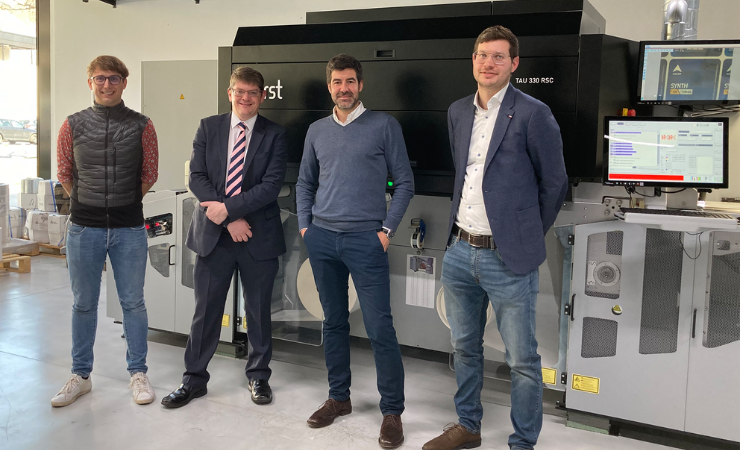Having started out in the photography business in the late 1920s, Durst’s activities and technologies have evolved as the world has changed. From the early 1990s and the Lambda 130 large format laser printer, Durst has slowly and steadily ramped up its activities in graphic arts.
From then to now, the company has made developments in large format inkjet, and helped the ceramic tile industry convert to a fully digital decoration process across the 2000s. In 2009 came the Tau 150, marking the company’s entry into digital label printing. In recent years, corrugated digital printing has emerged, and is now being progressed through its joint venture with Koenig & Bauer.
‘Inkjet has been at our core for the last 25 years,’ states Martin Leitner, product manager at Durst. ‘Over that time, we have adapted to the needs of the market, and will do so in the future.
‘When we introduced the Tau 150, this was a whole new press in a whole new market. With quality and performance characteristics very different to what we knew from large format and ceramics, the press at that time was best suited to industrial labels.’
Since then, the Tau press portfolio has had a redesign and been technically upgraded to bring it in line with the needs of today’s printers and converters.
This includes the speed, quality and output of saleable prints. A scalable print width up to 510mm, for instance, gives converters greater scope to take on a wider job book, figuratively and literally. Optional flexo stations, ink save mode and enhanced security features are further examples.
Thomas Macina, who is responsible for leading Durst’s global growth in labels and flexible packaging, reiterates, ‘With subsidiaries and partners in markets all over the world, we are in a perfect position to take advantage of the fast-growing market for digital labels and flexible packaging.
‘One reason for this is that digital has lowered the barrier to entry. Take large format printers as an example. To add flexo would mean investment in platemaking, repro, understanding the chemistries, finishing, and to have an experienced operator on hand. Digital has removed many of these needs and made it that much easier to think about diversifying into labels. It goes the other way too, with narrow web printers able to use digital to their advantage and capitalise on the relative simplicity of the process to step into packaging. Digital’s rising star in flexible packaging for example presents big opportunities.’
Mr Leitner adds, ‘For those using our presses, Force Majeure has meant they needed to transition work from flexo and offset to digital in recent times. This work won’t and can’t now be switched back. Take the smooth gradient run outs that can be achieved with 1200dpi inkjet, as an example. More end users have become aware of the capabilities of inkjet having had their work produced this way, meaning the technology is now more accepted than ever before. Variable data is another area that has advanced in recent times. Inkjet has proven itself, and exponential growth is following as a consequence.’
To support its digital press portfolio, in 2019 the Durst Software & Solutions division was founded to provide intelligent and straightforward software systems to help streamline print processes. This includes the Cloud-based Durst LIFT ERP/MIS system, the e-commerce orientated
Durst Smart Shop, and Durst Workflow, a high-end option for fully automated management of pre-press and production tasks. Durst Workflow Label is a specific future-oriented all-in-one software product for digital label printing.
‘We have all the ingredients in place be that with pressure-sensitive labels, tubes, shrink sleeves, IML, flexible packaging or corrugated with UV- or water-based inks,’ says Mr Macina. ‘We are innovating to allow our customers to be more efficient, more sustainable and ultimately more profitable.’






